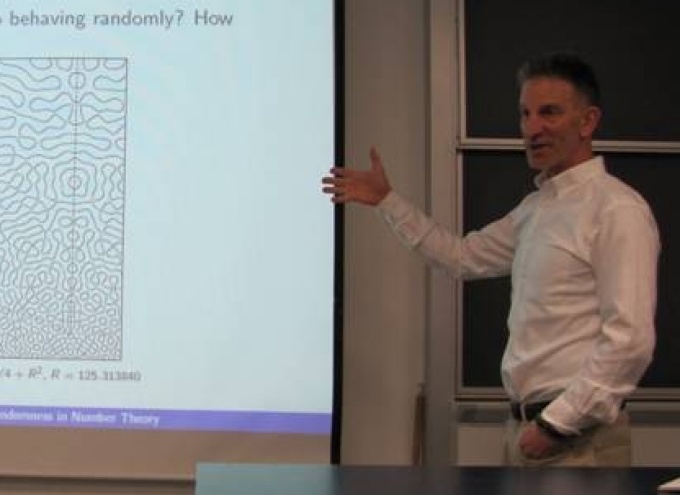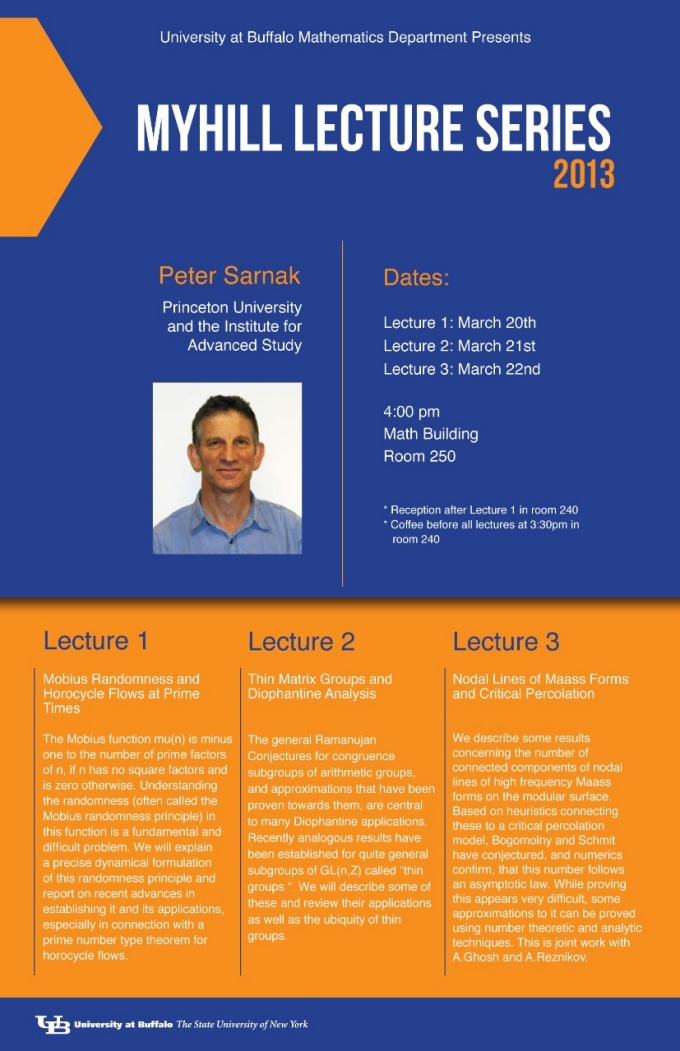Myhill Lecture Series 2013
Peter Sarnak

Professor Peter Sarnak from Princeton University presented the Myhill Lecture Series 2013. This 3-part lecture series was held in the Spring, and included a reception in honor of Professor Sarnak after the first lecture.
Receipient of the Wolf Prize in Mathematics, the Princeton Phi Beta Kappa award for excellence in undergraduate teaching, the Lester Ford Prize, and the Frank Nelson Cole Prize, Sarnak has been Eugene Higgins Professor of Mathematics at Princeton since 2002. He is an editor of the Annals of Mathematics, and has served as Aisenstadt Chair, CRM (Montreal), and Rothchild Chair, Isaac Newton Institute (Cambridge). He is on the Board of Adjudicators, and the selection committee of the Shaw Prize in Mathematics. Known for his work in analytic number theory, Sarnak is on the permanent faculty at the School of Mathematics of the Institute for Advanced Study. [Wikipedia]
Lecture 1: Mobius randomness and horocycle flows at prime times
Abstract :The Mobius function mu(n) is minus one to the number of prime factors of n, if n has no square factors and is zero otherwise. Understanding the randomness (often called the Mobius randomness principle )in this function is a fundamental and difficult problem.We will explain a precise dynamical formulation of this randomness principle and report on recent advances in establishing it and its applications, especially in connection with a prime number type theorem for horocycle flows.
Lecture 2: Thin matrix groups and Diophantine analysis.
Abstract : The general Ramanujan Conjectures for congruence subgroups of arithmetic groups, and approximations that have been proven towards them, are central to many Diophantine applications . Recently analogous results have been established for quite general subgroups of GL(n,Z) called "thin groups ". We will describe some of these and review their applications as well as the ubiquity of thin group.
Lecture 3 :"Nodal lines of Maass forms and critical percolation
Abstract : We describe some results concerning the number of connected components of nodal lines of high frequency Maass forms on the modular surface. Based on heuristics connecting these to a critical percolation model, Bogomolny and Schmit have conjectured, and numerics confirm ,that this number follows an asymptotic law. While proving this appears very difficult ,some approximations to it can be proved using number theoretic and analytic techniques. This is joint work with A.Ghosh and A.Reznikov.
